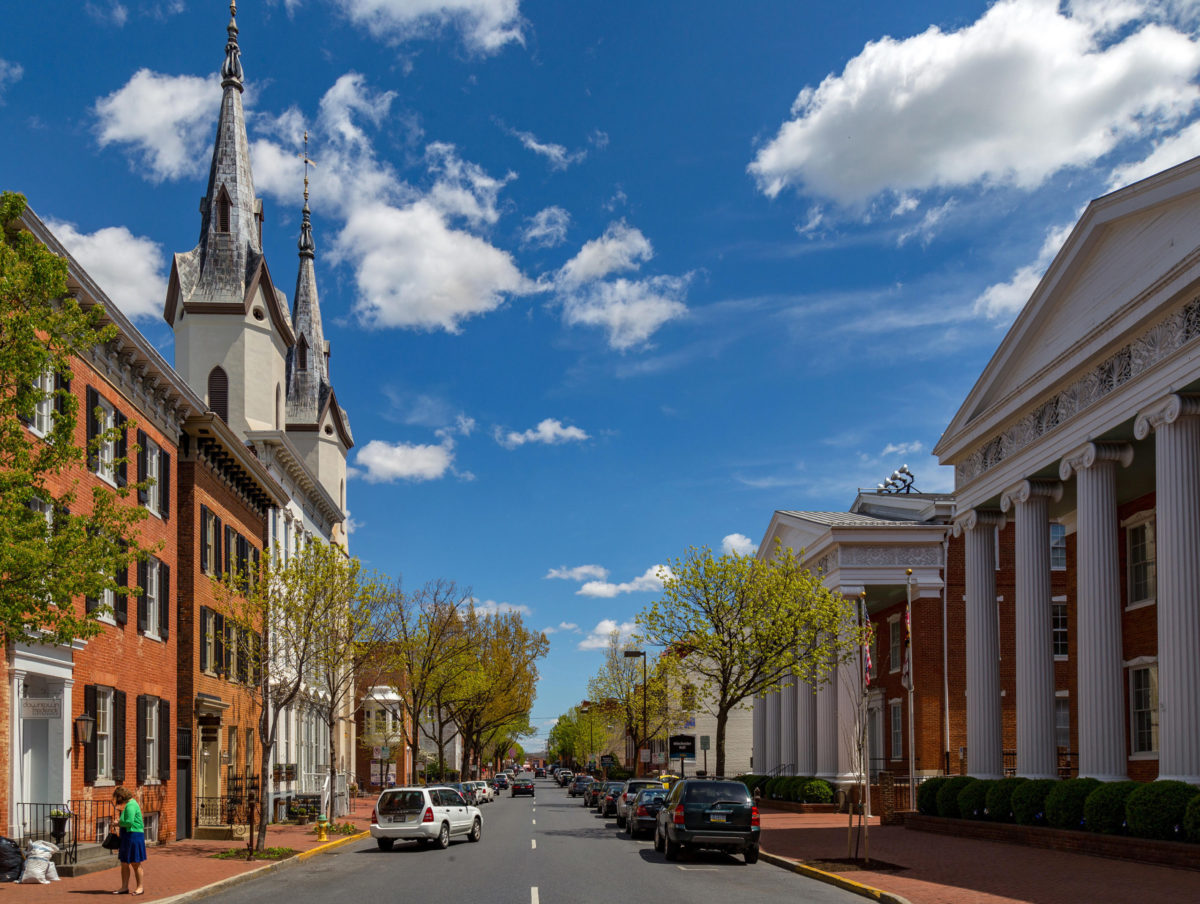In September 1862, the war descended on Frederick, Md., en masse, as troops from both sides tramped through its streets en route to participate in the Maryland Campaign. After the bloody battles of South Mountain on September 14, and the Battle of Antietam on September 17, the sick and wounded from both clashes filled dozens of churches and buildings, prompting The Philadelphia Inquirer to note, the “city is one vast hospital, and yet hundreds of poor fellows continue to arrive….” By September 24, the Frederick Examiner reported that the wounded already filled 17 buildings and “the thousands of sufferers, thrown by the emergency of battle upon this community, is a grievous tax upon the citizens….”
Between September and January 1863, nearly 10,000 wounded soldiers passed through Frederick’s hospitals.
The Union Army would again march through Frederick on its way to the Battle of Gettysburg in July 1863, and a year later, Confederate General Jubal Early would force the city to pay a ransom of $200,000 or be burned. Local banks paid the fee with cash in buckets at the former City Hall, which still stands today and houses a favorite local restaurant and brewpub. In fact, the streets of Frederick are still lined with many of the historic churches and brick buildings that temporarily housed the battle-scarred. Walking tours and Civil War Trails signs are provided to guide visitors to them. A stroll down Market Street includes an enchanting assortment of shops and eateries to peruse. No visit to Frederick would be complete without a trip to the National Museum of Civil War Medicine, where visitors can learn much more about the treatment of the war’s sick and wounded and how wartime medical innovations developed in this very town are still in practice today.
GET HISTORY’S GREATEST TALES—RIGHT IN YOUR INBOX
Subscribe to our HistoryNet Now! newsletter for the best of the past, delivered every Monday and Thursday.
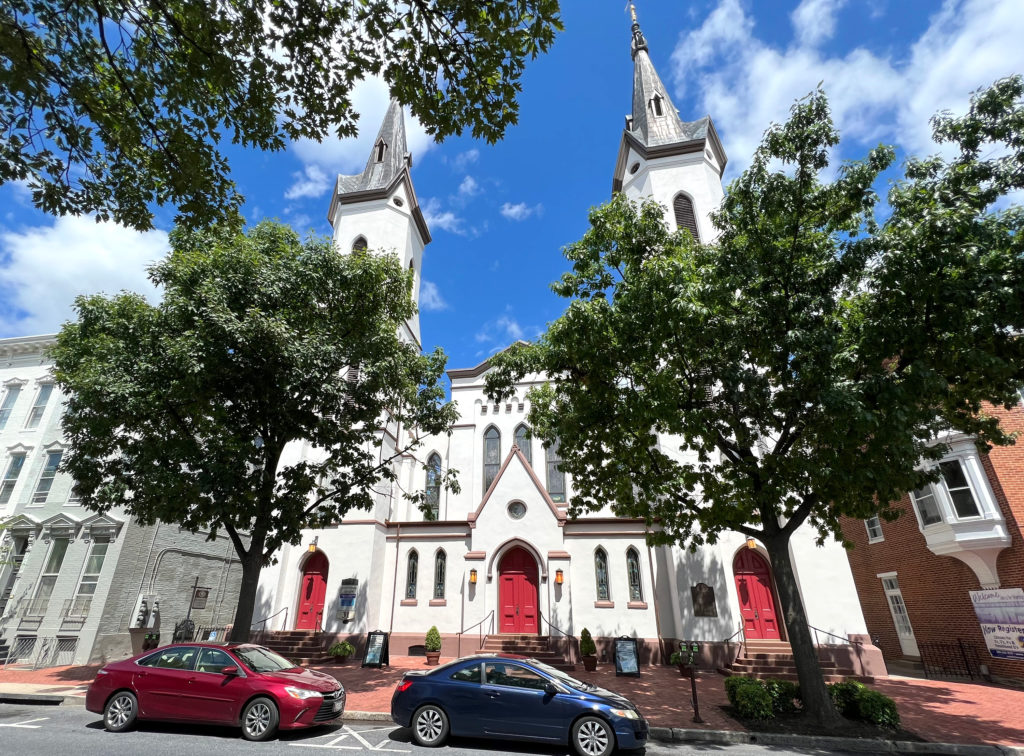
Evangelical Lutheran Church
31 E. Church St.
Following the Battles of South Mountain and Antietam, the Evangelical Lutheran Church served as a military hospital for four months. Sergeant Henry Tisdale of the 35th Massachusetts, treated here after being wounded at South Mountain, later wrote: “A rough board floor was laid over the tops of the pews. Folding iron bedsteads with mattresses, clean white sheets, pillows, blankets, and clean underclothing, hospital dressing gowns, slippers, etc. were furnished us freely. The citizens came in twice a day with a host of luxuries, cordials, etc. for our comfort. The church finely finished off within, well ventilated and our situation as pleasant and comfortable as could be made.”
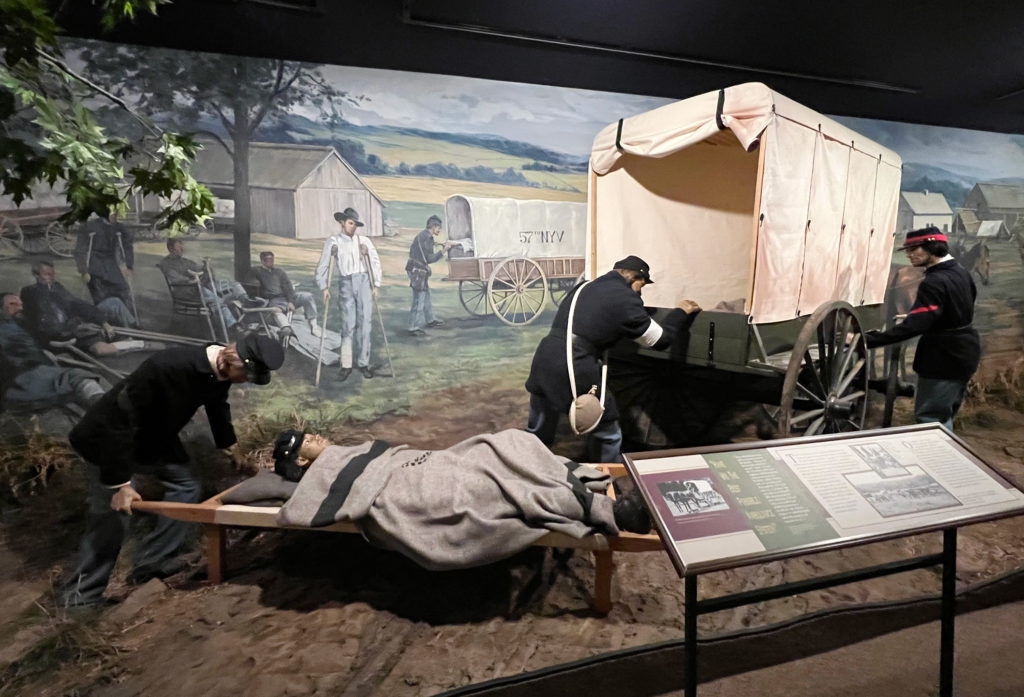
National Museum of Civil War Medicine
48 E. Patrick St.
This 7,000-square-foot museum houses an impressive collection of Civil War–era medical artifacts, including an original surgeon’s tent, a makeshift operating table from the Cedar Creek battlefield, and medical innovations such as a Lincoln artificial arm. Five immersive exhibits re-create aspects of Civil War medical issues: life in an army camp, evacuation of the wounded from the battlefront, a field dressing station, a field hospital, and a military hospital ward. Thurs.-Sat. 10 a.m.-5 p.m., and Sunday 11 a.m.-5 p.m. civilwarmed.org
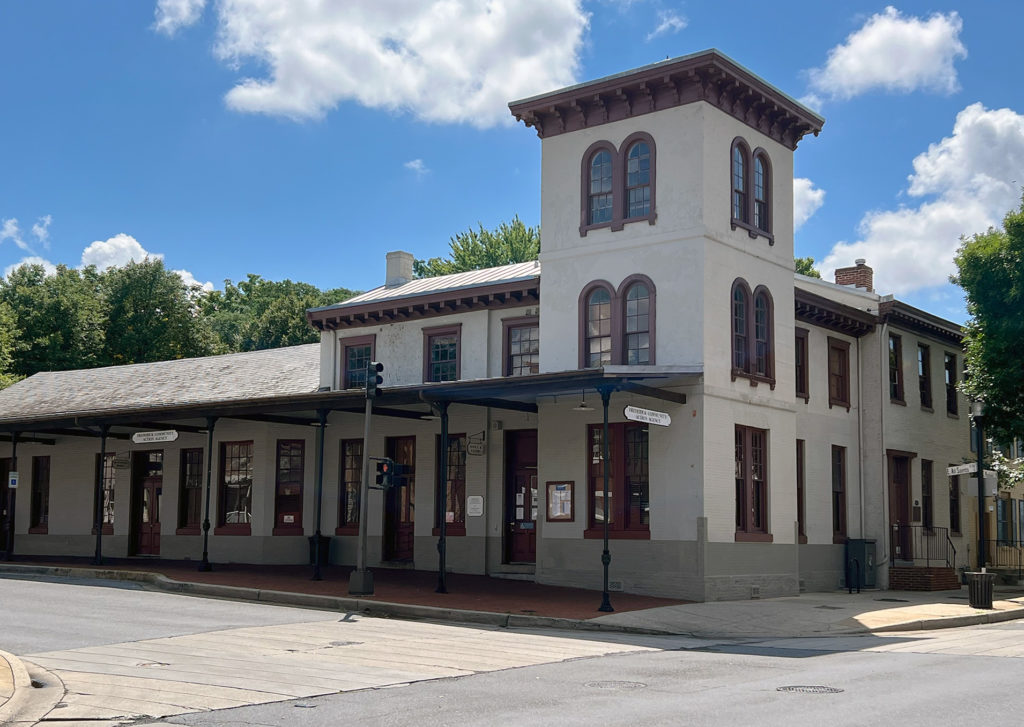
Lincoln’s Visit
79 S. Market St.
On October 4, 1862, President Abraham Lincoln spoke here from the railroad platform to residents gathering in the streets. Having returned from viewing the battlefields of South Mountain and Antietam, the president was heard to say, “I return thanks to our soldiers for the good service they have rendered, for the energies they have shown, the hardships they have endured, and the blood they have so nobly shed for this dear Union of ours; and I also return thanks not only to the soldiers, but to the good citizens of Maryland, and to all the good men and women in this land, for their devotion to our glorious cause.”
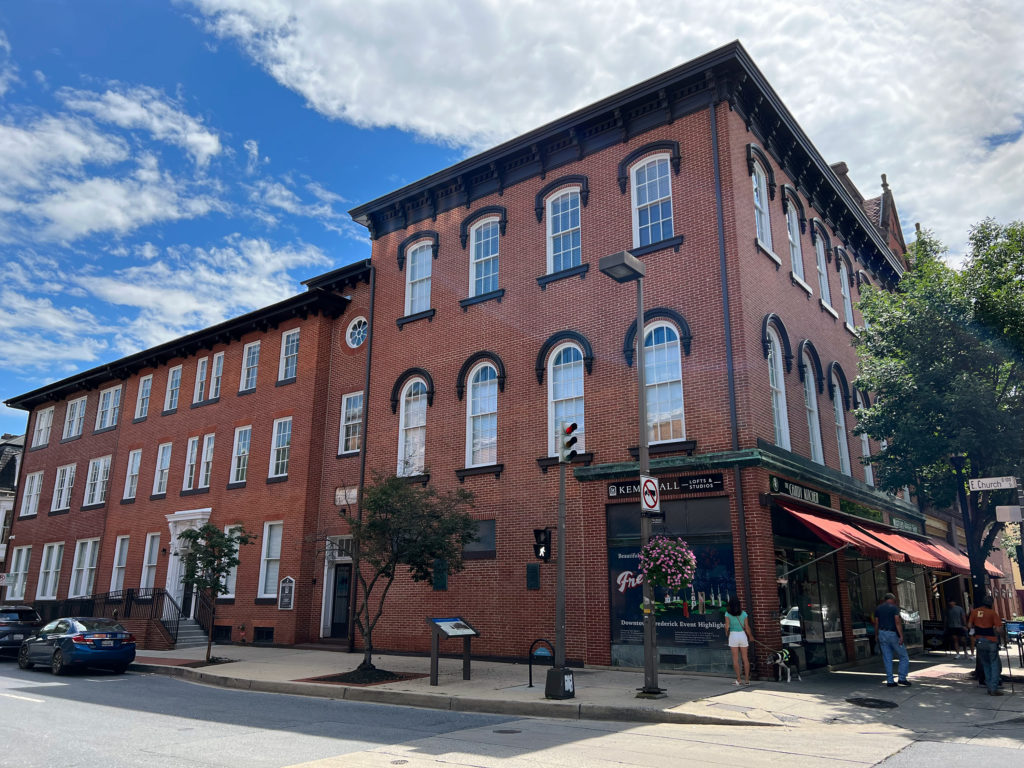
Kemp Hall
52 N. Market St.
Kemp Hall was the capitol building of Maryland during the spring and summer of 1861, as the state came perilously close to leaving the Union. Because secession would have placed the U.S. capital, Washington, D.C., between the Confederate states of Maryland and Virginia, President Abraham Lincoln could not let it happen. In April 1861, Maryland Governor Thomas Hicks called the General Assembly into special session here in Frederick, a strongly Unionist city, to debate secession. The state capital, Annapolis, was seething with resentment over the recent Federal occupation of that city. The legislature continued to meet at Kemp Hall throughout the summer. Finally, lacking a quorum—primarily because of the arrest of so many secession-leaning senators and delegates—it adjourned in September without ever considering a secession bill.
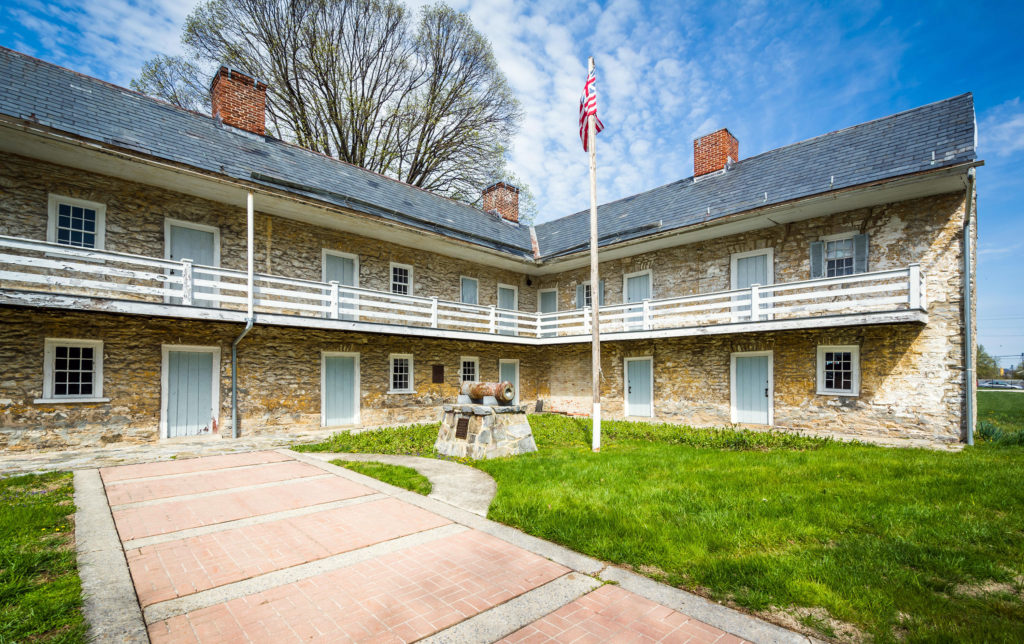
Hessian Barracks
242 S. Market St.
Built in 1777, British and Loyalist prisoners were housed here during the Revolutionary War. The barracks were used for various purposes during the 19th century, including as a state armory, silkworm-production site, and a military hospital, treating more than 30,000 sick and wounded Union and Confederate soldiers during the Civil War. Union Maj. Gen. Nathaniel Banks opened the first hospital here for three weeks in August 1861. In June 1862, it became U.S. Army General Hospital No. 1. On September 6, 1862, General Robert E. Lee captured the hospital and staff. Union Maj. Gen. George B. McClellan reoccupied Frederick a week later. The site continued to serve as a hospital throughout the war.
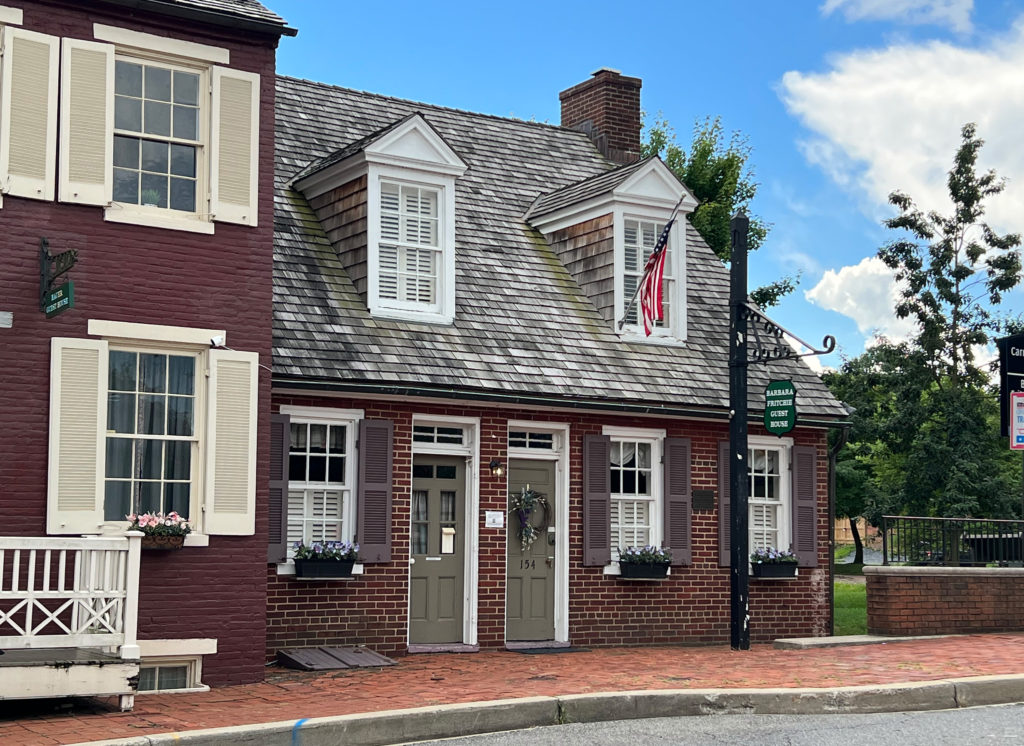
Barbara Fritchie House
154 W. Patrick St.
Frederick resident Barbara Fritchie became famous as the heroine of an 1863 John Greenleaf Whittier poem in which she pleads with an occupying Confederate general, “Shoot if you must this old gray head, but spare your country’s flag,” as she waved the U.S. flag from the window of her home. The tale has been debunked as folklore, but the house here—a 1927 reconstruction based on the original—still draws tourists. Today it’s an Airbnb and you can book a stay online at stayinfrederick.com.
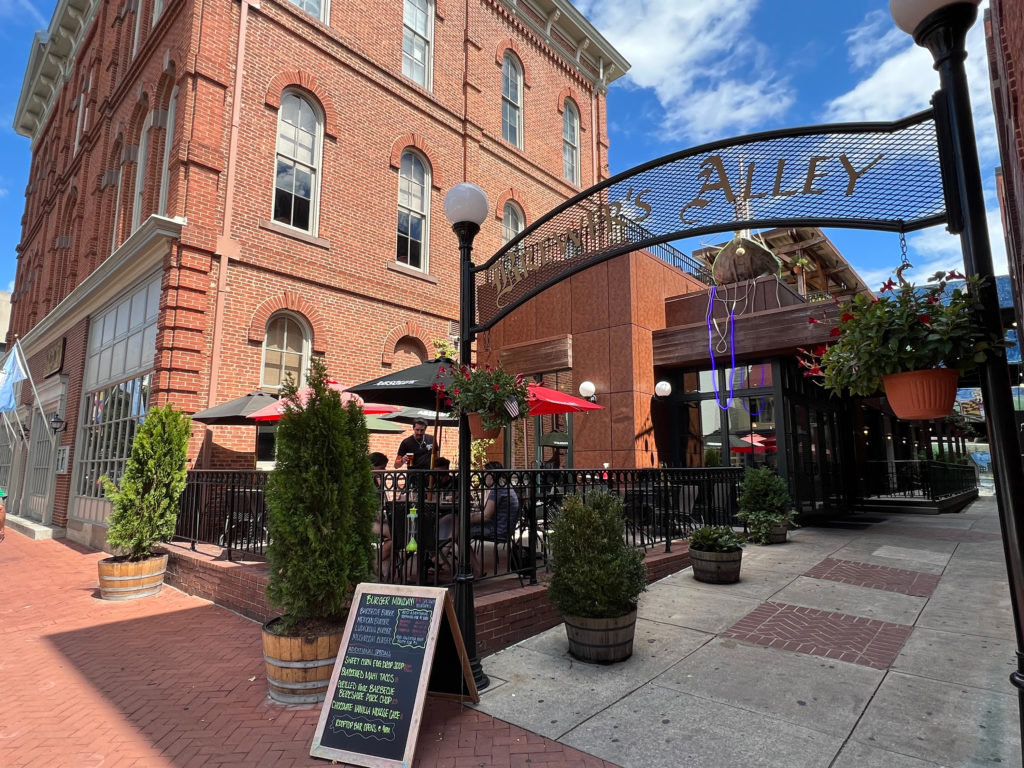
Brewer’s Alley
124 N. Market St.
The first residents of Frederick built a town hall and market house on this location in 1765, which was completed in 1769. In 1864, Confederate General Jubal A. Early forced the city of Frederick to ransom itself for $200,000. Local banks paid the ransom here using bushel baskets full of cash. It was July 9, 1864, and soon thunder from nearby Monocacy—“the battle that saved Washington”—rent the air. Today the building houses Frederick’s original brewpub, serving upscale pub grub & house-label microbrews. brewers-alley.com
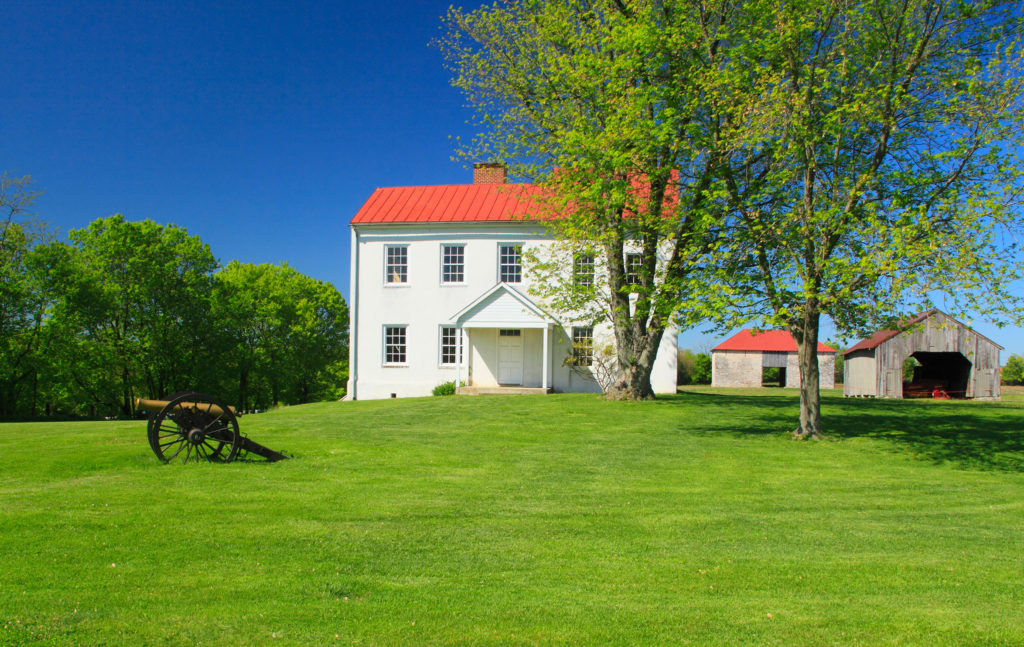
Battle of Monocacy
5201 Urbana Pike
Six miles from Frederick, on July 9, 1864, approximately 5,800 Federal soldiers under General Lew Wallace clashed with 14,000 Confederates under Jubal Early along the Monocacy River, as the Confederates advanced toward Washington, D.C. Wallace was outflanked and outnumbered and the battle ended with a Confederate victory, but it bought time for reinforcements to bolster the defenses of Washington, where Early headed next. The Monocacy National Battlefield preserves the site of the fight. Interpretation in the visitor center details the battle and its strategic importance. nps.gov/mono

